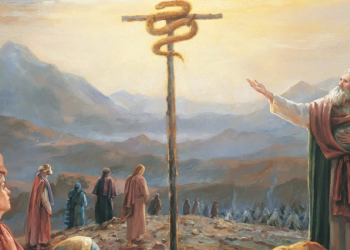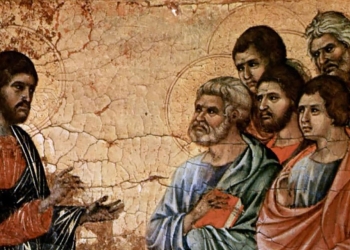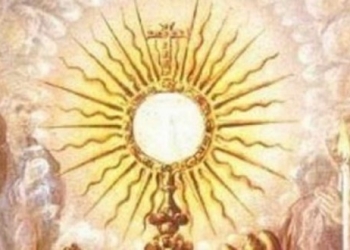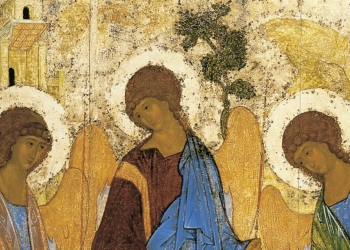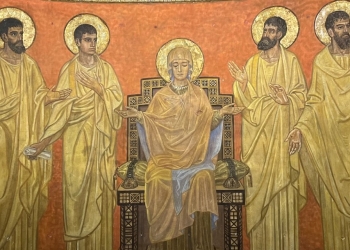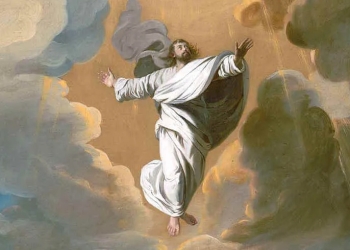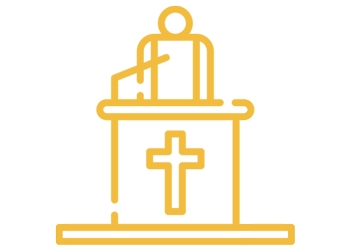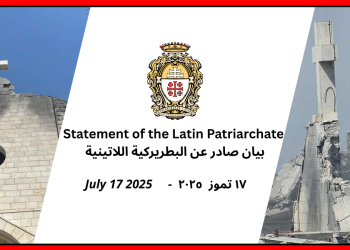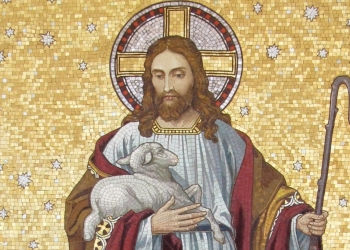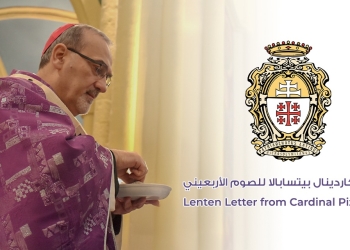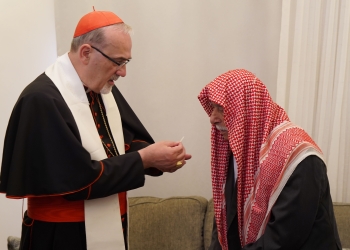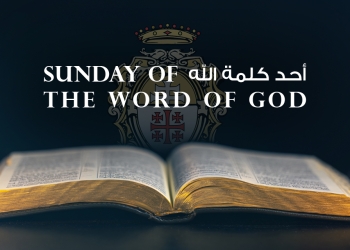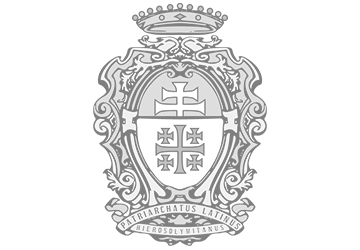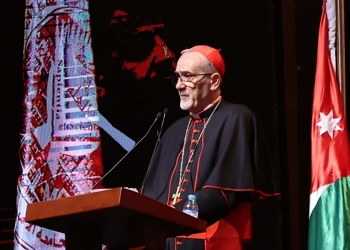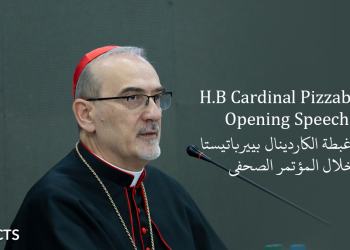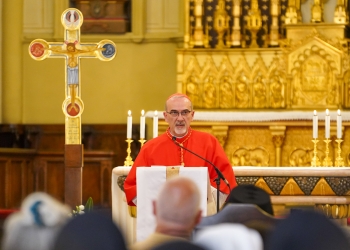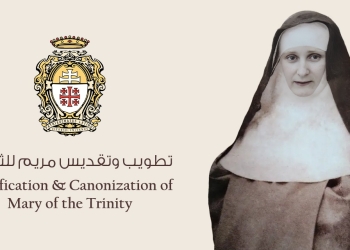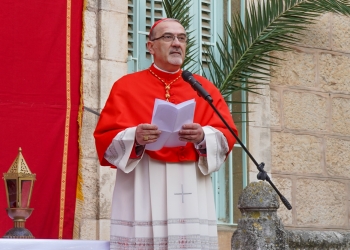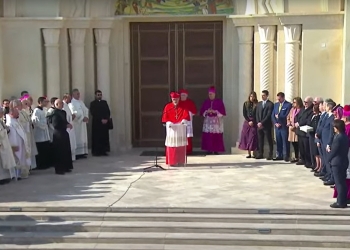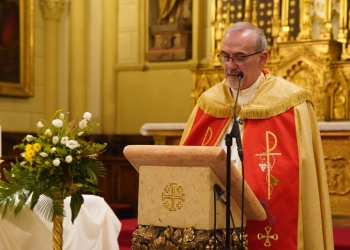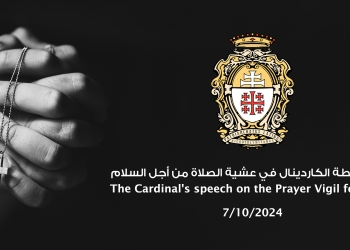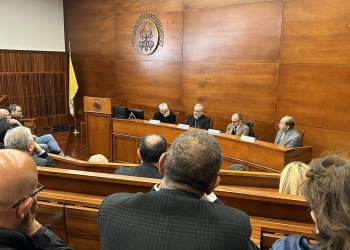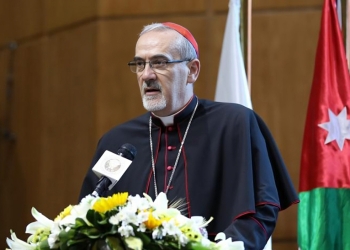The pilgrimage to the Earthly Jerusalem; an anticipation of the final pilgrimage to the Heavenly Jerusalem. Current situation of the Christian population in the Holy Land
1. Homo viator
Pilgrimage is a profound anthropological need of mankind that is rooted in our constant need to be in search of a place. We experience, in various forms, that we are existentially "out of place"; precarious, itinerant in this world and thus, in other words, far from full happiness. Thirsty for the absolute, we are restless nomads, tourists of the truth, perennial itinerants towards the Beyond; we never stop in front of our limits, being in continuous search for the full realization of our existence; we are by essence an homo viator[1]. In this sense, pilgrimage is as old as man and springs from our natural religiosity: there have always been places considered special, almost bridges between heaven and earth. The holy place is, from the beginning, an axis mundi, and leads to the numinous, where one goes in search of security, to receive answers or implore thanks to superior and celestial forces.
If it is true, on the one hand, what B. Pascal lapidarily stated: "Tout le malheur des hommes vient d'une seule chose, qui est ne savoir pas demeurer en repos, dans une chambre"[2], it is certain, on the other hand, that we, conscious of living in a temporary and precarious tent, are in search of our true homeland. The restlessness that pushes us towards the Other, the one who is not ourselves is, after all, our "existential engine".
On the Jewish holiday of Sukkòt ("Tents" or "Huts"), every Jewish family must fulfill the mitzvah, the "precept", of building a sukkah, an outdoor "tent", whose roof must be made of palm trees, to be able to contemplate the stars. On this occasion a "memorial" (zikkaròn) is made of the people's wanderings in the desert. The power of the memorial is all in the actualization: a Jew cannot forget that he is always a pilgrim on earth and must re-experience, every year, that primordial experience of the pilgrimage in the desert. I note parenthetically that there are also some Bedouin Arabs, now sedentary, who like to spend a short time in tents from time to time so as not to forget their roots!
2. Deus viator for homo viator
Divine revelation is grafted onto this natural, anthropological and religious quest of man, renewing and transfiguring it. The Jewish philosopher E. Lévinas masterfully identified the difference between the Greek and Jewish mentalities in the radical difference between the wanderings of Odysseus and Abraham. The first is indeed a journey into the unknown and into the other than oneself, but which in the end returns to the homeland, to the family and to the Self: it is cyclical. The second is totally open: Abraham "leaves his homeland forever for a land still unknown and [...] he forbids his servant even to bring his son back to the starting point."[3] This is why God calls Abraham to the pilgrimage of faith with these textual words: "Go forth (lekh lekha) from your land, from your birthplace and from your father's home to the land that I will show you" (Gen 12:1).
In the biblical tradition, going on pilgrimage means – according to the phrase that is repeated as a refrain in Deuteronomy – to the "place that the Lord shall have chosen".[4] Perhaps it is precisely for this reason that this place remains anonymous: it is not just a physical place, but a way towards the Lord! Not surprisingly, according to Jewish tradition, the first "holy place" is God Himself. Since ancient times, the temple of Jerusalem, the place of God's dwelling place in the world, was simply called ha-maqòm, "the place", [5] which later in rabbinic literature would be used as an expression to designate God Himself, "the Place" par excellence[6], as stated by Philo of Alexandria (†45 AD ca.). "God Himself is called 'place' (autos ho theos kaleitai topos), because He contains the whole without being contained by anything at all; He is the refuge of everything, and He is His own place, being contained in and developed by Himself alone."[7].
On the other hand, God, while reminding us of the most daring pilgrimage possible – the perennially and dynamically open journey towards the Infinite that is Himself! – is far from distant. Today there is much debate – not without controversy – about whether Jesus was a migrant or not. In fact, already in the first covenant, God did much more. In a tent among the wandering people in the desert, He became a pilgrim with the nomadic, itinerant people, Deus viator for homo viator. He is the first true guide of pilgrims! Already in the Old Testament, therefore, God is both the guide of the people and their destination, their true place. This will be fully accomplished in Christ, the Wayfarer and at the same time the "Place" par excellence, the Temple made flesh.
3. A pilgrimage towards the face of God
As is well known, pilgrimage is fundamental in the Jewish faith (as well as later in the Muslim faith), and was particularly so at the time of Jesus, when the temple was still standing. The Torah itself, in Dt 16:16, prescribes a pilgrimage to Jerusalem on the occasion of the annual feasts of Sukkòt, Pèsaḥ and Shavu'òt, with these literal words: "Three times a year every one of your males shall be seen with the Lord, your God [usually translated "shall stand before the Lord, your God," ed.], at the place He shall have chosen. This phrase is actually a later interpretation by 7th-8th century AD scribes, the Masoretes, who added vowels to the originally consonant-only Hebrew text. In fact, the consonant text literally reads: "Every one of your males shall see (yir'èh) the face of the Lord" (Cf. Ex 23:17). The Masoretes, careful to avoid anthropomorphism, did not want the reader to misunderstand what the text actually clearly states: the pilgrimage to the temple in Jerusalem is even equivalent to "seeing the face of the Lord".
Since ancient times, in fact, the temple of Jerusalem was considered the center of the earth and the gate of heaven, the axis mundi, the navel of the world[8], as the author of the Book of Jubilees writes even before the Christian era: "The garden of Eden is the Holy of Holies and the dwelling place of the Lord, Mount Sinai is the center of the desert, Mount Zion is the center of the navel of the earth: these three places were created as holy places, one before the other."[9] The Midrash Tanḥuma explains this tradition: "Just as the navel is located at the center of the human being, so the land of Israel is located at the center of the world [...]. The land of Israel resides at the center of the world, Jerusalem at the center of the land of Israel, the temple area at the center of Jerusalem, the sanctuary at the center of the temple area, the ark at the center of the sanctuary, and the foundation stone, from which the whole world was founded, in front of the ark."[10]
The temple of Jerusalem is therefore considered, along the lines of Jacob's dream in Gen 28, the "place" par excellence (v. 10: "[Jacob] came across the place"), the "stone" of foundation of the world (cf. v. 11), the stairway (sullàm) between heaven and earth on which Yhwh stands (vv. 12-13), the "gate of heaven" (v. 17), the "house of God" (bet-èl, v. 19). The Holy of Holies was considered the place set at the Garden of Eden, the bridge between the earthly and heavenly Jerusalem.
As is known, the first Judeo-Christians took up that tradition, transferring the center of the earth to Mount Golgotha. In the Arabic version of the apocryphal Cave of Treasures, Adam is commanded to be buried in the place of Christ's death and resurrection: "The place where your body will be laid is the center of the earth, from which and in which salvation will come to you and to all your children (...). Adam called that cave the 'cave of treasures.'"[11] Origen also confirms this tradition in his Commentary on Matthew (ca. 245 AD): "The body of the first man was buried in the same place where Christ was crucified, so that as all die in Adam all may receive life in Christ (Cfr. 1 Cor 15:22)'[12]. It is a fine interpretation: in the place where Adam descended into the tomb, Christ, the new Adam, died and descended to give life to the first man.
4. Yerushalàim: the "duality" of Jerusalem
The Hebrew name for Jerusalem, Yerushalàim, is very evocative. Leaving aside its scientific etymology, it is grammatically a dual form, as if to indicate that there are two Jerusalems: one terrestrial, the other heavenly. It is no coincidence that the book of Revelation closes with the wonderful vision of Jerusalem coming down from heaven (cc. 21-22): it is the "tent of God with men" (21:3), completing God's pilgrimage in the tent with the Israelites in the desert; it has "twelve gates" open to the four cardinal points because it is the cosmopolitan metropolis par excellence (21:12-13); it is the new Eden (22:1-2). Here is the destination of all our pilgrimages!
This explains how pilgrimages to the Holy Land, which find their roots in Judaism, developed in the Church from the first centuries not only as a devotional practice, but also and above all as a return to the sources of faith, especially to Scripture and to the historicity of revelation (Cf. Melitone da Sardi, St. Alexander of Cappadocia [or of Jerusalem], Origen, St. Pionius of Smyrna, Eusebius of Caesarea, St. Jerome); as a living contact with the mother liturgy of the Church of Jerusalem (Egeria), with monasticism (St. John Cassian, St. Jerome, Cyril of Scythopolis, John Moscus) and with the cosmopolitan Christian Jerusalem[13]; as a renewal of the catechumenate and a penitential journey (especially in the Middle Ages).
5. The Christians of the Holy Land, citizens of the "two Jerusalems"
Have we forgotten, caught up in the passionate exposition of the background outlined, the Christians of the Holy Land? Never! On the contrary, we may have already measured the depth of their identity, of the admirable paradox in which they live and which constitutes their "cross and delight": to be suspended between the two Jerusalems, heavenly and earthly. Born were "we are all born" and where "all our sources are" (Ps 87:5, 7), our Christians are often strangers in their own land. Raised in the mother church of Jerusalem, nourished and sustained by the universal Church, they often feel on its margins. Rightly proud to be natives of the holy places, they, in various cases, disown the practice of faith. They are Arabs, yet not Muslims. They are Palestinians, yet they are not supporters of an Islamic state. They display the cross of Christ on their homes, on their chests and often as tattoos inked on their flesh, but sometimes they put Barabbas before Him, that is, the pursuit of mere human justice (but who among us, at least once in our lives, has never chosen Barabbas?)[14] Quite a few Christians are Israelis, but not Jews: this is the case of the Arab-Israeli Christians, the Hebrew-speaking Christians and the numerous migrants. To complicate matters even more, most of the faithful of the Holy Land are Christians, but not Catholics (most are Orthodox), while the majority of Catholics are not of the Latin rite, but of the Eastern rite! Consider that in Arabic the Greek Orthodox are called rum ortodòx ("Roman Orthodox") and the Greek Catholics rum katolìk ("Roman Catholics")! We could easily continue listing the paradoxes experienced by our faithful, but let these be enough to have immense respect for their worth – they have kept their faith for centuries in the middle of a non-Christian majority! – and for their wounds, to love them as brothers and sisters, correcting them if necessary, but not before having appreciated their importance.
All this, moreover, makes our faithful similar to pilgrims and, after all, to all people: they too are precarious or at any rate feel in many cases like foreigners in their own land, not identifying sic et simpliciter with a Jewish state or a Muslim majority state, albeit trying to live in peace and be good citizens. In short, our faithful of the Holy Land are more than ever called to accept the reality – admirable and paradoxical at the same time – that distinguished the first Christians, according to what the Letter to Diognetus (5:5) reports about them: "They dwell in their own country, but as strangers; they participate in everything as citizens and endure everything as foreigners; every foreign land is a homeland to them and every homeland a foreign land."
In the text above, we have rendered the Greek term pàroikoi as "strangers". The term "parish" derives exactly from the Greek paroikìa, which can mean both a reality "close to the house", and a reality that, being close to it, is "outside the house". One of the signs of the times that we must note is precisely the fact that the parish, so "close to the house" in an Christian environment, is now increasingly "outside the house", increasingly a pilgrim in the world. We are returning, in fact, to times similar to those of the Apostolic Church, where Christians were a minority in the midst of a pagan world. In it, the Church is increasingly called to be salt, light and leaven, trying to avoid the two opposite extremes: weeping over herself on the one hand, persisting in restoring the Christendom of the good old days on the other.
The Catholic Church, in this particular context, is numerically small (about 1% of the total population), but rich in many initiatives and institutions. There are over a hundred Catholic schools, numerous centers of biblical and theological study, shelters, houses supporting different forms of fragility (hospitals, homes for the disabled, orphanages, etc.). The diocesan priests, all local, are over a hundred. Alongside them, there are about six hundred religious men and about a thousand religious women, whose service is particularly valuable and appreciated. The Church of the Holy Land is the Church of the Holy Places, well known and a central point of reference for the Christian identity of our communities and of the whole country. But the Holy Places cannot be separated from the ecclesial communities that live around them and from the institutions that the communities have created over time.
The identity of the Christian community is not only linked to individual sites or monuments, as if these could be separated from each other or isolated from their respective communities. Yes, this identity is focused on its holy places, but also revolves around their schools, hospitals, and cultural, social and economic activities. In short, we cannot separate places from people and from their ordinary lives.
Pilgrimages to the Holy Land and to Jerusalem in particular must be a return to the sources of our faith and an encounter with the humanity of Christ and the historicity of divine revelation, but it must also become an encounter with that small portion of the Church that keeps Christian witness alive in those places.
In conclusion, local Christians, although marked by continuous conflicts and sufferings, find themselves in a privileged situation that all Christians should also experience: that of being "strangers and pilgrims" in this land (Heb 11:13; 1 Pt 2:11). This obviously does not mean not fighting so that local Christians can have a homeland, a dignified and peaceful life, a just society without discrimination of any kind. Instead, it means adhering to the call that our Lord made to us first and foremost in this Holy Land – already at that time full of conflicts, conspiracies, usurpations of lands, social and religious injustices – to be salt, light and leaven of the world. The important thing is not to have a lot of salt in a dish, but that the little salt that there is does not lose its flavor and really salts. Not everything has to be light in this world; a small light, one that really shines, is enough. It is not necessary to have a lot of yeast in the dough: it takes little if it really ferments.
This means that, for the Christians of the Holy Land, it is more necessary than ever to return to the sources of their faith, to be faithful to the word and grace of Jesus Christ, to retrace the pilgrimage of faith. It is therefore necessary to return to the radicality of Christian life, which is never fundamentalism: "radicality" means returning to the roots of our Baptism and our faith; to the newness of Christ; to the heart of the Gospel, which is the Sermon on the Mount, and therefore the love we should have for our enemies; to the center of our Christian identity, which is the Paschal Mystery of Christ; to the divine nature that He has given us through His Spirit and that makes us new creatures, capable of loving beyond death.
Jerusalem, finally, is a mirror of what we all are. We must not be scandalized by her wounds, her contradictions, or even her sins. The "neophyte" pilgrims, upon seeing the divisions and sins of Jerusalem, remain troubled: all they must do is enter the Holy Sepulchre! The "initiated" pilgrims, on the other hand, know that the "duality" of Jerusalem – earthly and heavenly – is also their own. We too are like the Jerusalem below, full of chaos, contradictions, injustices done and suffered, confusions, etc... Yet this is the concrete Jerusalem that God has chosen, as He has chosen us, to transfigure us from our wounds and manifest in us the heavenly Jerusalem, so that we may become, in this weak and precarious "tent" of ours, a living temple of the Holy Spirit, the dwelling place of God among men, a bridge between heaven and earth, between the Jerusalem of down here and of above, "which is free and is the mother of us all" (Gal. 4:26).
[1] Cf. G. Marcel, Homo viator. Prolegomena to a metaphysics of hope, Turin 1967.
[2] B. Pascal, Pensées, no. 205 [139], in J. Chevalier (ed.), L'oeuvre de Pascal, Paris 1936, 875: "All the unhappiness of man comes from one thing alone, not knowing how to be quiet, in a room" (our transl.).
[3] E. Lévinas, "The Trace of the Other," in Discovering Existence with Husserl and Heidegger, Milan 1998, 219.
[4] Cf. Deut. 12:5,11,14,18,21,26; 14:25; 15:20; 16:2,6-7,11; 17:8,10; 18:6; 26:2.
[5] Thus in 1 Kings 8:29; Ezd 5:15; 2Mac 1:29; 2:18; 3:2; 8:27; 13:24.
[6] Cf. A. Marmorstein, The Old Rabbinic Doctrine of God, I. The Names and Attributes of God (PJC 10), London 1927, 92; E.E. Urbach, The Sages. Their Concepts and Beliefs, I, Jerusalem 1975, 63-79.
[7] Philo, Som 1:61-63 (our transl.).
[8] Already for the Babylonians Bab-Ilu ("Babylon"), the "gate of God," was the center of the earth, while for the Greeks the omphalos, the "navel" of the world, was in the innermost part of the temple of Apollo at Delphi.
[9] Jub 8:19 (our transl.). 1Hen 26:1-2 names the "holy mountain" and the "blessed place" (most likely the temple in Jerusalem) with the expression "center of the earth," while Josephus Flavius, Bell 3:52, attests that Jerusalem was called the "navel of the earth" (cf. Ant 3:180-185), and Philo, LegGai 281,294; Flacc 46, considers it the "metròpolis," the "mother city" and "capital of the world."
[10] Cf. Tan Qedoshim 10 (our transl.); cf. b.San 37a.
[11] CavTes (Arabic vers.) 96a,11-14,16-18 (our transl.); 96b,7-8; cf. CavTes (Ms. Or) 5,10-11.
[12] Origen, Comm Mt 126
[13] Egeria, Itin 47:3-4, informs us that at the Holy Sepulcher the liturgy and preaching was in Greek, but there was a translator in Syriac (Aramaic). Moreover, although from 451 the Patriarchs of Jerusalem were Greeks, the local population was mixed: in addition to Greeks, there were Arabs, Syro-Arameans, descendants of the Nabataeans, Samaritans, Moabites, etc... Due to the strong call of the holy places, many pilgrims from various ethnic groups had permanently settled in the Holy Land, and some of them became monks. On the Mount of Olives, for example, there were monks praying in Greek, Georgian, Syriac, Armenian, Latin and Arabic!





